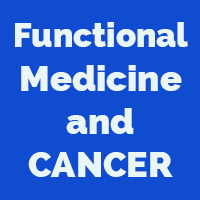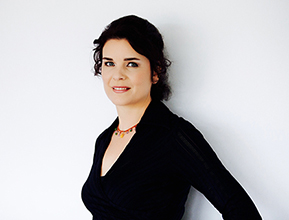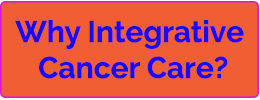Functional medicine addresses important aspects of the entire physical body and other components of the whole person to help provide cancer prevention and cancer therapies.
What is functional medicine?
Functional medicine is a science-based field of health care offering personalized medicine for primary prevention and underlying causes plus integrative treatments instead of symptoms for serious chronic disease. Functional medicine as a system of health care is designed to provide comprehensive support to systems of the body.
Central to the practice of functional medicine is an examination of the core clinical imbalances that underlie various disease conditions. Those imbalances arise as environmental inputs such as diet, nutrients (including air and water), exercise, and trauma processed by body, mind, and spirit through a unique set of genetic predispositions, attitudes, and beliefs. The fundamental physiological processes include communication, both outside and inside the cell; bioenergetics, or the transformation of food into energy; replication, repair, and maintenance of structural integrity, from the cellular to the whole body level; elimination of waste; protection and defense; and transport and circulation. The core clinical imbalances that arise from malfunctions within this complex system include the following.
- Hormonal and neurotransmitter imbalances
- Oxidation-reduction imbalances and mitochondropathy
- Detoxification and biotransformational imbalances
- Immune imbalances
- Inflammatory imbalances
- Digestive, absorptive, and microbiological imbalances
- Structural imbalances
Imbalances such as these are the precursors to the signs and symptoms by which functional medicine practitioners detect and label or diagnose organ system disease. Improving balance—in the patient’s environmental inputs and in the body’s fundamental physiological processes—is the precursor to restoring health and it involves much more than treating the symptoms. Functional medicine works to improve the management of complex, chronic disease by intervening at multiple levels to address these core clinical imbalances and to restore each patient’s functionality and health. Functional medicine is not a unique and separate body of knowledge. Grounded in scientific principles and information widely available in medicine today, functional medicine combines research from various disciplines into highly detailed yet clinically relevant models of disease pathogenesis and effective clinical management.
Functional medicine focuses on functionality at many levels, rather than a single treatment for a single diagnosis. Functional medicine uses the patient’s story as a key tool for integrating diagnosis, signs and symptoms, and evidence of clinical imbalances into a comprehensive approach to improve both the patient’s environmental inputs and his or her physiological function.
Instead focusing on the diagnosis, functional medicine treats the whole person.
What are some factors associated with the potential for cancer development in a functional medicine model?
Multiple factors are involved in cancer development from a whole person perspective.
“The cellular rhythm and dance of life is altered in response to different environmental signals, and that cancer represents an altered orchestration of that complex symphony. The cell is constantly in dynamic flux; cellular signaling creates messages that induce changes internally and externally and the cell is continually changing and morphing in response to the environment it is exposed to.”
-Jeffrey Bland, PhD, Founder of Functional Medicine
A number of systemic functional changes are associated with the beginning of cancer that include and are not limited to the following1, 2.
- Increased DNA damage
- Decreased DNA repair
- Modified epigenetics
- Genomic instability
- Alteration in cell cycle physiology and check point integrity
- Alternation in specific protein kinase activities
- Alternation in intercellular signal transduction
- Altered immune system physiologic function
- Increased chemokine and cytokine activity
- Increased hormonally driven mitotic activity
Therefore, “multiple factors must work in combination to convert a normal cell into the systemic disease of cancer2.”
Components of bodily functions creating a web of networks impacting health are identified through a functional medicine model. Common contributors to increased cancer potential include and are not limited to the following1-3.
- Disturbances in insulin signaling
- Chronic inflammation
- Increases in messages triggering cellular cycling
- Altered intercellular signal transduction
- Increased genomic instability
- Altered mitochondrial bioenergetics associated with oxidant stress
- Altered nucleosome epigenetic methylation patterns
- Cellular hypoxia
- Chronic opportunistic bacterial and viral infections
- Altered post-translational protein composition
How do quality integrative cancer providers apply this and other knowledge to enhance oncologic care?
Jeanne Wallace, PhD, CNC and oncologist Dwight McKee, MD explain the following approaches through functional medicine integrative cancer care.
- Reduce side effects
- Enhance efficacy of chemotherapy, radiation, or hormonal therapy
- Target mechanisms of multi-drug resistance and radiation resistance
- Alter the “terrain” of the patient to be non-supportive of tumor cells
In the development of an integrative protocol and monitoring patients, these providers consider multiple processes utilized by neoplastic cells to support their proliferation, progression, and resistance to treatment.
Processes exploited by neoplasms are these components, and understood by quality functional integrative cancer care.
- Aberrant signal transduction
- Altered gene expression/stability
- Up-regulated inflammatory response
- Evasion of apoptosis
- Immune evasion and suppression
- De-differentiation
- Hormonal dependency (some)
- Invasion and metastasis
- Radio/chemo resistance
- Loss of stromal integrity
- Neo-angiogenesis
How does functional medicine treat those elements of the body with integrative cancer treatments?
Jeanne Wallace, PhD, CNC and oncologist Dwight McKee, MD say that a comprehensive protocol then includes these essential aspects of self in the physical body affected by cancer.
- General Wellbeing
- Promote Gene Stability
- Modify Gene Expression
- Control Inflammation
- Provide Immune Support
- Induce Cytostatis
- Induce Re-Differentiation
- Induce Apoptosis
- Modulate Hormones (if relevant)
- Inhibit Invasion and Metastasis
- Support Anti-Angiogenesis
1. General Wellbeing
The foundation of wellness
GOALS:
- Address self-nourishment and self-care
- Breathing, water intake
- Diet nutrition habits, laughter, emotional outlets
- Relaxation, sleep, play/creativity
- Exercise/Movement, social support and spiritual pursuit
- Address areas of poor organ function
General Wellbeing Potential Agents:
Wholesome diverse, organic, mostly plant-based diet, low-glycemic
- Increase phytonutrients: 8-10+ servings per day seasonal organic vegetables and fruits, legumes, nuts, and seeds
- Reduce blood sugar: Low glycemic, high fiber, no refined carbs
- Decrease omega-6 intake; increase omega-3 and omega-9 (olive oil)
- Restrict high copper foods
Multiple vitamin/minerals
- Iron free
- Copper free
- Boron free if ER+
Digestive Aid
- Adequate chewing
- Bitters
- Digestive enzymes
Support glucose metabolism
- Low-glycemic high-fiber diet
- Chromium, vanadium, biotin, lipoic acid, gymnema, bitter melon, cinnamon, holy basil, goat’s rue seed extract, fenugreek seek extract, B-complex vitamins, luteolin
Probiotic flora
Soluble-fiber supplement
Thyroid modulation (if TSH <3.5)
- Crucifers
- Soy
- Lemon balm
- Bugleweed
Mitochondrial support
- L-carnitine, Acetyl-L-carnitine
- COQ10, Alpha lipoic acid, NADH
Adaptogen herbal combinations
Main actions of primary adaptogens
- Anti-fatigue effect
- Aids in the stress response
- Improves oxygen uptake
- Supports optimum endocrine function
- Improves learning, memory, and mood
- Improves eyesight and hearing
- Regulates blood sugar levels
- Organ protective
- Anti-viral: Increases the body’s ability to resist infection, prevents colds and the flu, shortens recovery time
- Immuno-protective
- Anti-toxic (environmental, chemo, radiation)
- Free radical scavenging, redox-cycling, anti-lipid peroxidative
2. Promote Gene Stability
GOALS:
Control chronic excessive oxidative stress
- May promote genetic instability
- Fosters more aggressive tumor behavior
TESTING:
- Assessments of redox balance
- Ratio oxidized/reduced glutathione is a good marker
- Urinary isoprostanes-end products of lipid peroxidation
- Functional Liver Detoxification
- Phase I and II pathway assessment
- Methylation status
- Homocysteine, methyl malonic acid, organic acids
- Urinary hormone metabolites
Promote Gene Stability Potential Agents:
- Fruits, vegetables, spices
- Diet goal target 5,000 to 7,500 ORAC units/day
- Antioxidant nutritents
- Carotenoids, tocopherols/tocotrienols
- Anti-inflammatory agents
- Methylating agents
3. Modifying Gene Expression
TESTING:
- Antibody staining of tumor sample for various gene products (proteins)
POTENTIAL TARGETS:
- Nuclear-Factor-kB (NF-kB)
- Her-2/neu (Erb-B-2)
- PDGF
- Survivin
- Cyclin D1
- VEGF
- EGFR (her-1)
- P53
- Multi-drug resistance gene (MDR)
Modifying Gene Expression Potential Agents:
Nuclear Factor-kB (NF-kB) inhibitors
- Culinary spices
- Green tea (EGCG)
- Luteolin (artichoke leaf extract)
- Parthenolide (Feverfew)
- Quercetin
- Resveratrol
VEGF
- Boswellia
- Curcumin
- Fish oil EPA
- Selenium
- Grape seed extract
- Green tea
- Resveratrol
- Baikal skullcap
EGFR (her-1, Erb-B-1)
- Green tea
- Grape seed extract
- Licorice
- Pycnogenol
- Quercetin
- Soy (genistein)
- Vitamin D
p53
- Soy
- Folic acid
- Selenium
- Quercetin
- Vitamin E
- Cruciferous-family vegetables
HER-2/neu (c-erb)
- Fish oil DHA
- Oleic acid (olive oil)
- Flaxseed
- Soy
- Quercetin
- Emodin (in aloe vera and Polygonum cuspidatum)
4. Control Inflammation
TESTING:
- High-sensitivity c-reactive protein; a healthy score is below 1.0
GOALS:
- Block inflammatory compounds that can promote tumor growth, proliferation, metastasis and angiogenesis and also suppress the immune response
- COX-2
- LOX-5
- 5-HETE
- 12-HETE
- 15-HETE
Control Inflammation Potential Agents:
- Bromelain
- Quercertin
- Boswellia
- Curcumin
- Resveratrol
- Hops (Humulus lupulus)
- Green lipped mussel extract
- Sea cucumber
- Stinging nettle root
- Holy based
- Fish oil omega-3
- Ginger
- Pancreatic enzymes
- Combination anti-inflammatory formulations
5. Provide Immune Support
TESTING:
- NK Cell Cytotoxic Function (4-hr Cr-release assay) > 25 LU
- WBC > 4.0; Lymph % > 20%
- T-cell subsets (CD4:CD8 ratio)
Provide Immune Support Potential Agents:
- Vitamin C
- Bromelain
- Selenium
- PSK or PSP from Coriolus versicolor
- Arginine
- Thymis peptides or Rx: Zadaxin
- Maitake-D fraction
- Arabinogalactans
- Garlic
- Agaricus blazei
- Astragalus
- Reishi (Ganoderma)
- Lactoferrin
- Cordyceps sinensis
- Transfer Factor, colostrum
- Whey Protein
- Acidophilus/Bifidus probiotics
- Mistletoe (Viscus album)
- AHCC
- Panax ginseng
- Chlorella
- Aloe vera
- Zinc
- Schisandra
- Vitamin A
6. Induce Cytostasis (Cell Cycle Arrest)
GOAL:
- Upon completion of chemotherapy and/or radiotherapy, induce residual cells to cell cycle arrest
- May not be an appropriate goal during cytotoxic treatment if the therapy is cell cycle dependent
TESTING:
- Not directly available
- Prioritize if ki-67/MIB-1 elevated
- May be monitored with functional MR-SPECT or PET scans
Induce Cytostatis Potential Agents:
- Melatonin
- Garlic
- Quercetain
- Bacopa
- Green Tea
- Perillyl Alcohol
- D-limonene
- Blood sugar regulation
- Redox balance
7. Induce Re-Differentiation (Maturation to Healthy Cell Types)
TESTING:
- 25-OH-vitamin D3 (more than 60 and less than 80 ng/ml)
- Serum retinol 1.2-2.4 mg/L
- Consider surgical path report
- Description of tumor as well versus poorly differentiated
Induce Re-Differentiation (Maturation to Healthy Cell Types) Potential Agents:
- Vitamin D3
- Vitamin A (retinoic acid)
- Butyrate (fiber + bifidus probiotic)
- Boswellia (boswellic acids)
- Berberine
- Monoterpenes (Perillyl alcohol, limonese)
- Caffeic esters (propolis)
- Resveratrol
- Flavonoids (quercetin, apigenin, luteolin)
- Phenylbutyrate, phenylacetate, phenylacetylglutamine
8. Induce Apoptosis Programmed Cell Death
TESTING:
- May be partially inferred by functional status of p53
- BCL-2
Induce Apoptosis Potential Agents:
- Green tea EGCG
- Quercetin
- Vitamin A
- Selenium
- Boswellia (boswelic acids)
- Vitamin D3
- Curcumin
- Genistein
- Vitamin E succinate
- Schisandra
- Berberine
- Artemether/artemisinin/artesunate
- Vitamin C
- Monoterpenese (Perillyl alcohol, limonene)
- Fish oil EPA
- Resveratrol
9. Modulate Hormones
Relevant in breast, prostate (some ovarian, endometrial) cancers
Note: Elevated estrogen favors angiogenesis
TESTING:
- 2:16-hydroxyestrogen ratio
- Methylation capacity
- Estrogen-progesterone ratio
- Ratio of estradiol + estrone (unfavorable) vs. estriol (favorable)
DIET & LIFESTYLE:
- Avoidance of xenoestrogens
- eg. Bisphenol A
- Adequate soluble fibers
- Adequate GI flora (cultured foods)
- Avoidance of alcohol, caffeine (except green/white tea)
MODULATE HORMONES POTENTIAL AGENTS:
- Indoles (DIM)
- Calcium d-glucarate
- Curcumin
- Melatonin (controversial)
- Flaxseed meal
- Soy isoflavones
- Aromatase inhibitors
- Button mushrooms
- Resveratrol
- Biochanin A
- Luteolin
- Ursolic acid (sage, rosemary, and thyme)
- Flaxseed
- Chrysin
10. Inhibit Invasion and Metastasis
GOALS:
- Select inhibitors of matrix metalloproteins (MMPs)
- Maximize NK Cell Functions
- Reduce inflammation and hypercoagulation
TESTING:
- NK Cell Cytotoxic Function (4-hr Cr-release assay) >25 LU (rr 20-48 LU)
- C reactive-protein less than 0.8; Platelets (rr 150-300 kmm3)
- Fibrinogen 150-350 mcg/dL (rr 190-425 mg/dL)
- D-dimer <300 ng/mL, some sources suggest <150 ng/ml (rr <300 ng/ml)
Inhibit Invasion and Metastasis Potential Agents:
- Arabinogalactans
- Avemar
- Coriolus versicolor (PSK/PSP)
- Green Tea EGCG
- Flaxseed meal
- Panax ginseng
- Bromelain
- Nattokinase
- Lumbrokinase
- Butyrate-fiber and bifidus probiotic
- Garlic
- Vitamin C Soy esp. genistein
- Bioflavonoids
- Vitamin A
- Anthocyanins
- Alkylglycerols (in brain tumors)
- Proanthocyanidins (GSE, PCO)
- Fish oil EPA
- Melatonin (high dose)
11. Support Anti-Angiogenesis
TESTING:
- Serum copper ≤ 90 (rr 70-145 mg/dl)
- Ceruloplasmin ≤ 22 (rr 18-36 ug/L)
- Free copper {serum Cu minus 3x ceruloplasmin } ≤ 15).
- Consider surgical report statement of
- vascularity or microvessel density (if any) and
- immunohistochemistry
- VEGF
- EGFR
- Also relevant: elevated inflammation and insulin are angiogenesis promoters
- Fasting glucose/Hemoglobin A1C
- High sensitivity C-reactive protein
DIET:
- Avoid high copper foods (and supplements)
- Organ meats
- Shellfish
- Prepared chocolates
- Water-soluble chlorella
- Rooibos tea
- Filter water if copper plumbing and water is acidic pH
Support Anti-Angiogenesis Potential Agents:
- Potential Copper Lowering Agents
- Rx: Tetrathiomolybdate (TM)
- 20 mg TID with meals + 60 mg at hs
- GOAL: 8-12 mg/dl CU++
- Molybdenum
- Zinc
- Chlorella
- Sulfur compounds (NAC, taurine)
- Lipoic acid
- Vitamin C
- Apigenin (mint and propolis)
- Selenium
- Soy isoflavones, especially genistein
- Vitamin D3
- Green Tea EGCG
- Curcumin
- Garlic
- Resveratrol
- Vitamin A
- Cordyceps sinensis
- Shark liver oil (squalene)
- Berry flavonoids
- Fresh/frozen shark cartilage
- Glycine
- Bindweed
- Rx: Tetrathiomolybdate (TM)
Providers using functional medicine approaches to support people with cancer may apply different strategies to measure increased potential and physiological state function of cancer. The application of evidence based tests and interventions vary based on the provider and their knowledge base. Despite their scientific viability, many of the evaluation tools and approaches are not widely used today although increasingly recognized and available.
The conceptual functional medicine framework contains components of an integrative cancer care model addressing the whole person. Functional medicine approaches to cancer are relevant to early detection, patient care during active disease, and long-term management of cancer as a chronic disease. The practice is evolving through the synthesis of studies, identification of approaches, research, clinical practice, as well a networks of providers and patients.
What is the history of functional medicine?
Functional Medicine was founded in the1990s by Jeffrey Bland, PhD as a discipline that unites progress in basic medical sciences with clinical medicine to address the growing problems associated with chronic disease.
For More Information





